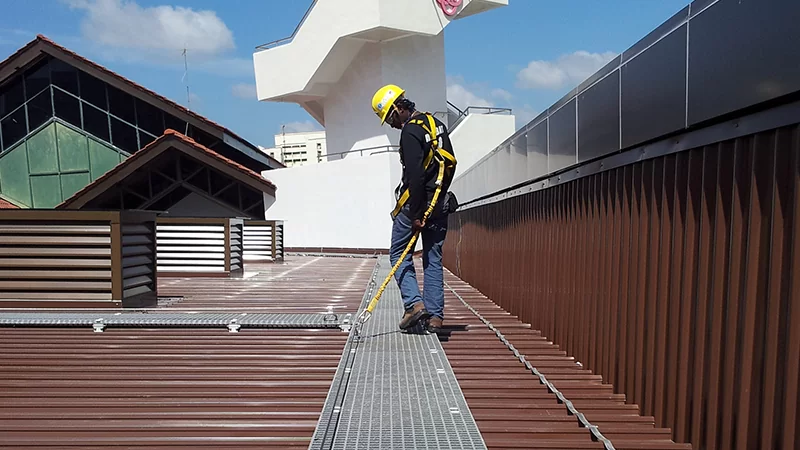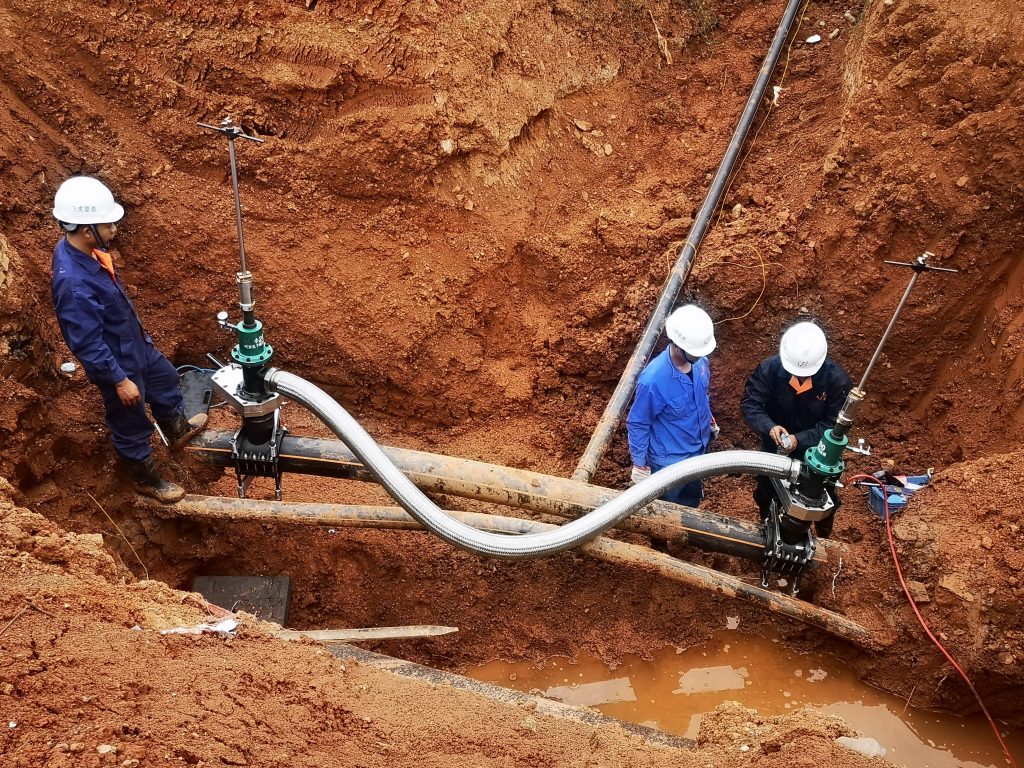Understanding PE Line Stopping
PE Line Stopping is a specialized method used in pipeline management to temporarily control or stop the flow of liquids or gases within polyethylene (PE) pipes. Instead of shutting down an entire system, this process isolates a specific section of the pipeline to allow maintenance, modifications, or repairs to be performed safely and efficiently. Many industries, including water utilities, gas companies, and industrial plants, rely on this method because of its reliability and ability to reduce downtime. The procedure is particularly valuable in situations where continuous service is critical and interruptions would be too costly or disruptive. By providing a safe and controlled way to manage pipeline flow, PE line stopping ensures that both infrastructure and customers remain unaffected during critical work. This method also offers a level of flexibility not achievable with traditional approaches, making it an indispensable tool in modern infrastructure management.
How PE Line Stopping Works
The process begins with careful planning and site evaluation to determine the feasibility of the operation. A hot tap is usually performed first, which allows an access point to be created in the pipeline without disrupting flow. Specialized line stopping equipment is then installed, designed specifically to handle PE pipes and their unique properties. Once in place, a stopper is inserted into the pipeline to temporarily halt or divert the flow. This enables safe repair or replacement of valves, fittings, or damaged sections while maintaining system integrity. Safety standards must always be followed throughout the process, ensuring that workers, the environment, and the surrounding infrastructure remain protected. Each step requires precision, as PE line stopping involves pressurized systems where accuracy is essential. By combining advanced technology with proven procedures, PE line stopping provides both safety and efficiency.
Advantages of Using PE Line Stopping
The benefits of using PE line stopping extend far beyond just flow control. One of the biggest advantages is the ability to perform pipeline work without shutting down an entire system. For water utilities, this means residents and businesses continue receiving uninterrupted supply. For gas companies, it ensures safe and reliable service without risking outages. This method also minimizes service disruption for customers, reducing complaints and avoiding financial penalties related to downtime. Another advantage is increased safety, as the process is designed to be controlled, reducing risks to workers. Environmental safety is also improved since there is less chance of accidental leaks during the process. Additionally, the method provides flexibility, allowing companies to isolate only the section that requires attention instead of affecting an entire network. Overall, PE line stopping creates cost savings, operational continuity, and greater reliability for industries that depend on pipelines.
Typical Applications of PE Line Stopping
This method is widely used in various sectors that depend on continuous pipeline operations. Municipal water utilities apply PE line stopping to repair or upgrade aging infrastructure without cutting off water service to thousands of residents. Gas distribution networks use it to perform upgrades, install valves, or repair damaged sections safely. In industrial plants, PE line stopping plays a critical role in maintaining productivity, as shutting down entire systems can cause significant financial losses. It is also valuable in emergency situations where a quick response is needed to stop a leak or prevent an escalation. The versatility of this process makes it ideal for projects ranging from planned maintenance to urgent pipeline interventions. By offering solutions that work across multiple industries, PE line stopping has become a standard practice for professionals managing pipelines.
Challenges and Limitations to Consider
While PE line stopping is highly effective, it is not without its limitations. One of the main challenges lies in the size and pressure rating of the pipeline. Certain diameters or very high-pressure systems may not be suitable for line stopping, requiring alternative methods. Material considerations also play a role, as pipelines constructed from non-compatible materials may need different equipment or procedures. Additionally, environmental factors, such as weather conditions or the pipeline’s surrounding environment, can affect the operation. Another limitation is the need for skilled professionals who are trained and certified in performing PE line stopping safely. Without expertise, the risks of improper sealing, leaks, or equipment failure increase significantly. For these reasons, companies must carefully evaluate each project and ensure that they partner with experienced service providers. Proper planning and realistic expectations help mitigate most challenges.
Equipment and Technology Behind PE Line Stopping
The equipment used in PE line stopping is designed to handle the unique properties of polyethylene pipelines. Line stopping fittings are installed at the access point, creating a sealed environment for the stopping head. This stopping head, once deployed, presses into the pipeline and halts flow temporarily. Specialized machines ensure the stopper is securely positioned and can withstand pipeline pressure. Hot tapping equipment is often used in combination, allowing for entry into pressurized systems without leakage. Advances in technology have also improved safety and efficiency, introducing automated controls, pressure monitoring systems, and more reliable sealing materials. These innovations ensure that operations are not only faster but also safer. By investing in cutting-edge equipment, companies can achieve higher levels of reliability and reduce risks associated with pipeline maintenance.
Best Practices for Successful PE Line Stopping
Success in PE line stopping depends on following industry best practices. Before any project begins, detailed planning and inspection must be performed to assess pipeline conditions. Proper safety protocols should always be observed, including compliance with relevant industry standards and regulations. Operator training is critical, as only certified professionals should handle the process. Equipment should be inspected and maintained to ensure proper performance during operation. Companies must also consider environmental protection, taking measures to minimize risks of leaks or contamination. Communication between teams is equally important, as clear coordination helps prevent accidents and ensures smooth execution. By adhering to these practices, organizations maximize safety, efficiency, and reliability when performing PE line stopping.
Cost and Efficiency Factors
From a financial perspective, PE line stopping is often the most cost-effective solution for pipeline maintenance. Traditional shutdowns can be extremely expensive, involving loss of service, customer dissatisfaction, and potential penalties. By contrast, PE line stopping allows companies to continue operations while repairs or upgrades are performed. This saves both time and money, especially for large-scale utility networks. In addition, fewer disruptions mean fewer emergency costs associated with customer support or service recovery. Long-term, the method helps extend pipeline life by allowing maintenance to be performed proactively. For industries managing tight budgets, PE line stopping represents a practical and efficient option. While there are upfront costs for equipment and skilled labor, the return on investment is significant when compared to the financial consequences of full system shutdowns.
Frequently Asked Questions (FAQ)
How long does PE line stopping take?
The duration depends on the pipeline size, pressure, and complexity of the work, but most projects can be completed within a few hours to a full day.
Can line stopping be performed on pressurized systems?
Yes, the method is designed for pressurized pipelines and ensures safety when done by certified professionals.
What pipe sizes are compatible with PE line stopping?
A wide range of diameters can be accommodated, though equipment limitations may apply to very small or very large pipes.
Is this method safe for gas pipelines?
Yes, it is commonly used in gas distribution systems, provided that proper safety measures are followed.
How does PE line stopping differ from traditional valve installation?
Unlike permanent valve installation, line stopping offers a temporary solution that allows work to proceed without requiring permanent changes.
Takeaway
PE line stopping has become a cornerstone in modern pipeline management, offering a safe, efficient, and cost-effective way to control flow in polyethylene pipelines. By isolating sections without disrupting entire systems, it enables critical maintenance, repairs, and upgrades across water, gas, and industrial sectors. While there are challenges, the benefits far outweigh the limitations when performed by skilled professionals with the right equipment. For organizations that prioritize operational continuity, safety, and long-term savings, PE line stopping remains one of the most reliable methods available today.











